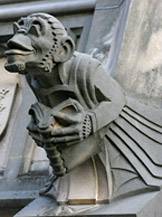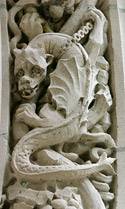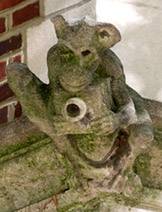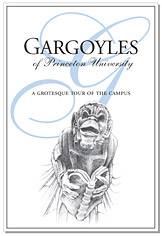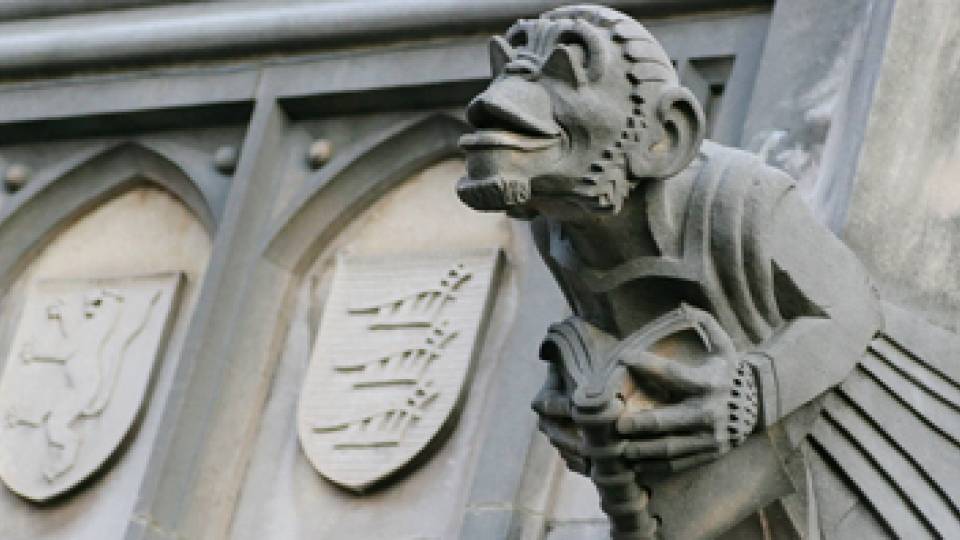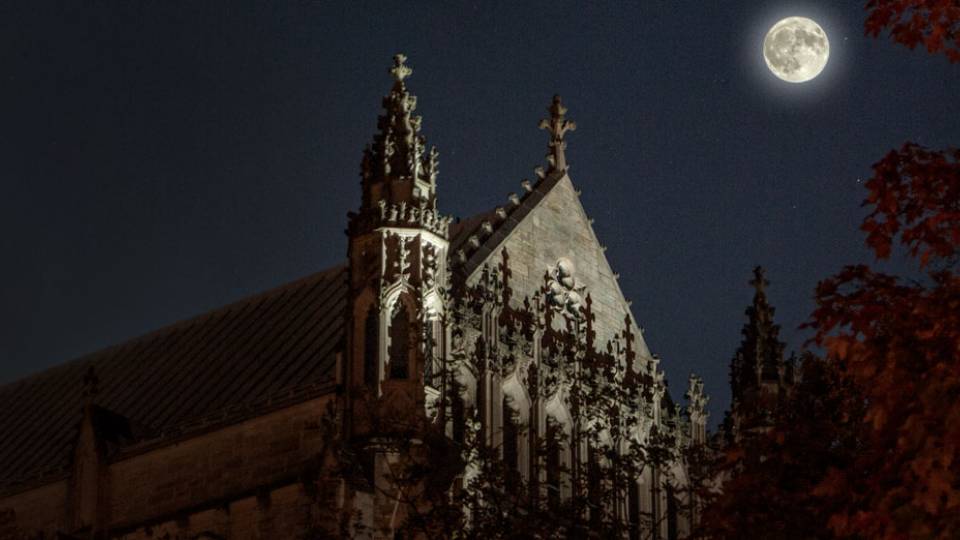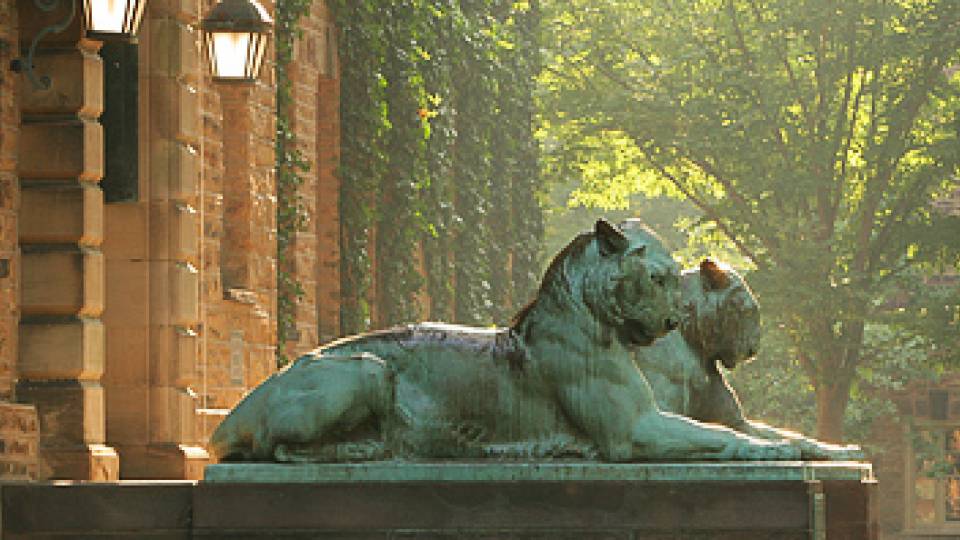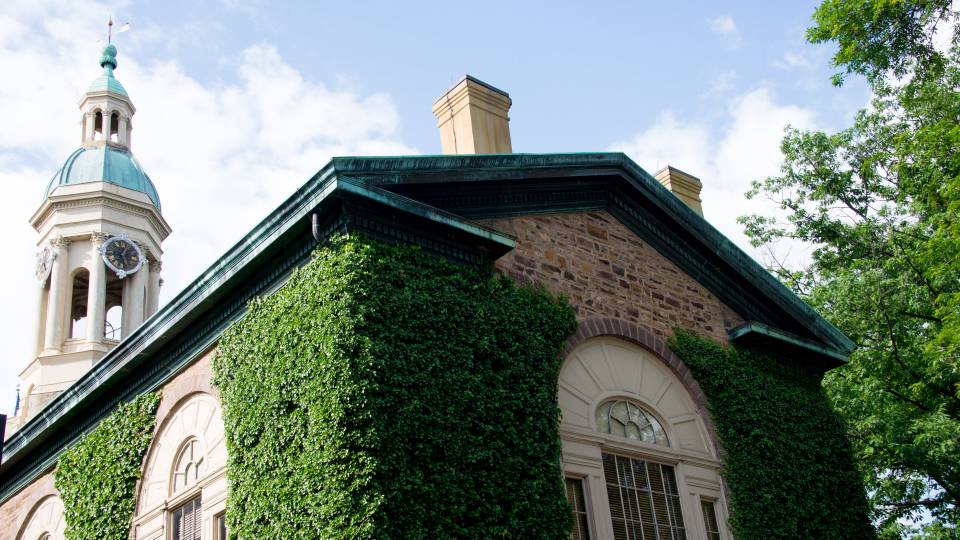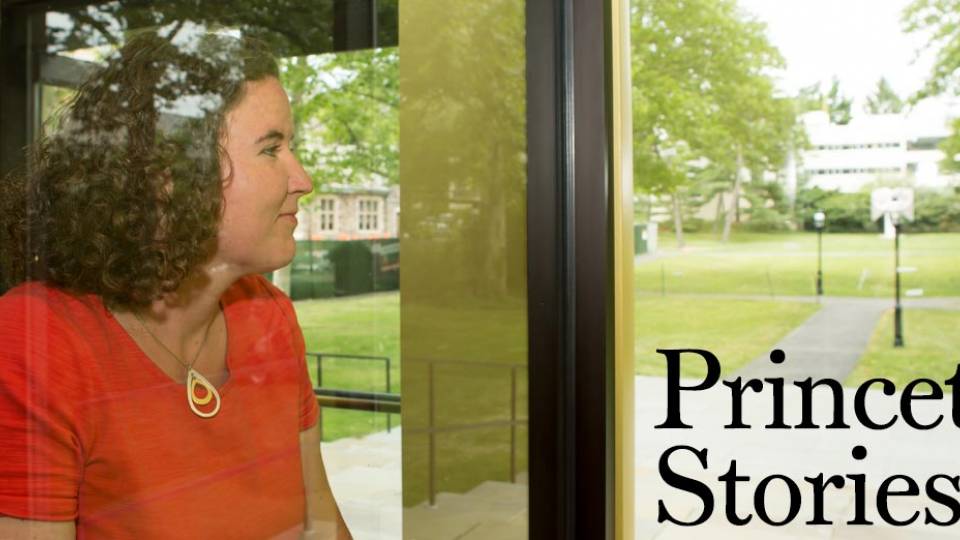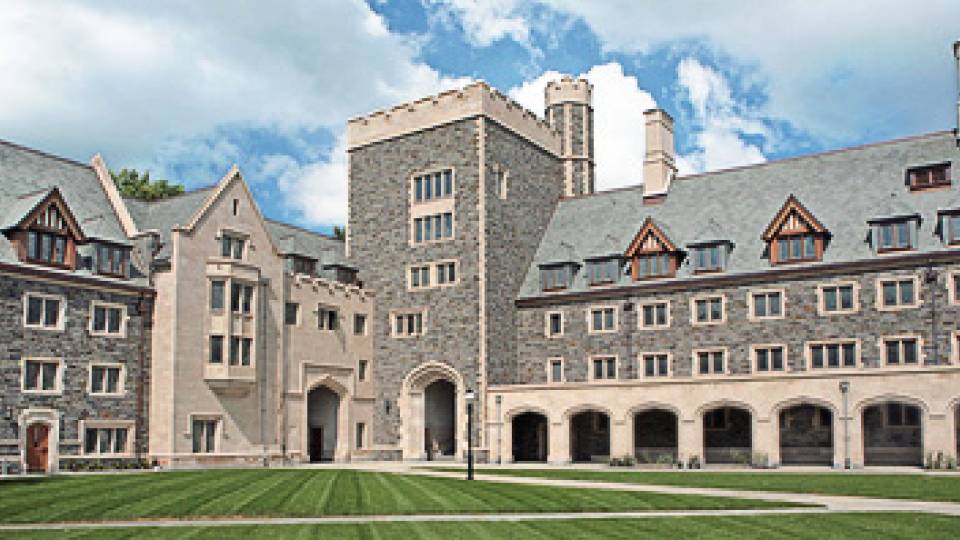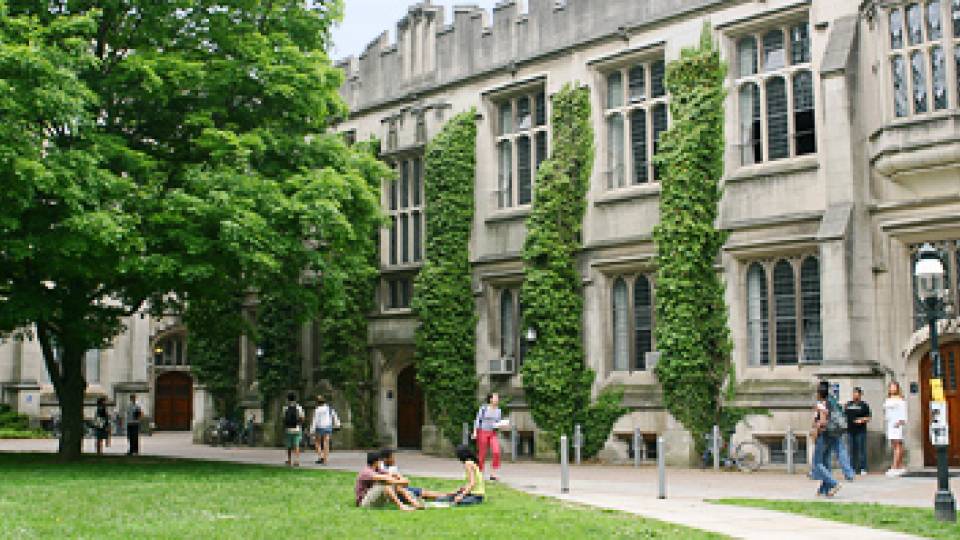As the Halloween season conjures visions of ghouls and goblins, those in the holiday spirit may enjoy a striking collection of creatures adorning buildings all across the Princeton campus.
Among the distinctive features of the campus are the gargoyles and grotesques perched on the gothic-style arches and towers on many buildings. The architecture and beauty of the campus inspired F. Scott Fitzgerald's short story from 1917, "The Spire and the Gargoyle," originally published in the Nassau Literary Magazine, a Princeton student publication.
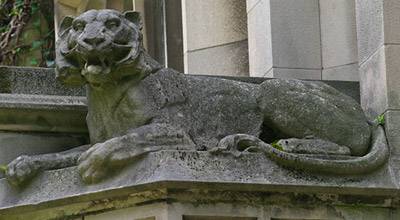
A roaring beast on McCosh Hall is one of many tiger carvings across campus. (Photo by John Jameson)
Princeton's gargoyles -- small grotesque animal or human figures carved in stone -- can be found at dozens of locations on everything from downspouts to arches. True gargoyles are designed to drain rainwater away from the roof. Some are traditional designs such as dragons and strange animals, and many are historical, symbolic of education and philosophy, or just fun.
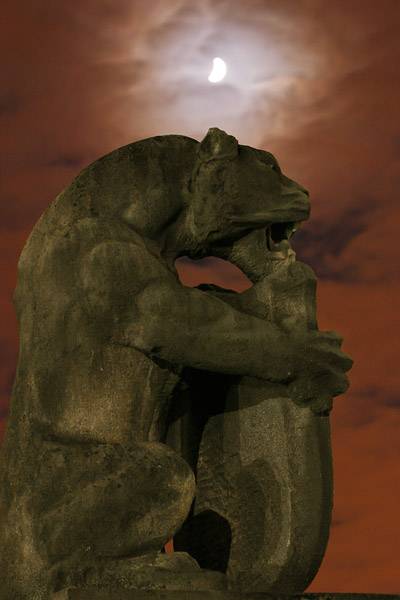
One of a pair of marble tigers that stands watch at the north entry of McCosh Walk by Little Hall. (Photo by Denise Applewhite)
Other carved sculptures and reliefs known as grotesques perform no practical function. They are purely for decoration and to delight and intrigue the viewer, though many of those on campus represent historical figures, students, educational themes or athletics.
The University's Office of Communications has for many years produced and maintained a series of "little books" that focus on particular aspects of Princeton’s history and the campus. Many of these books are designed for self-guided walking tours. One of the more popular of these books is "The Gargoyles of Princeton University: A Grotesque Tour of the Campus," which provides a glimpse and description of many of those figures. An updated version of the book will be available soon. Call (609) 258-3601 or e-mail to purchase the book.
